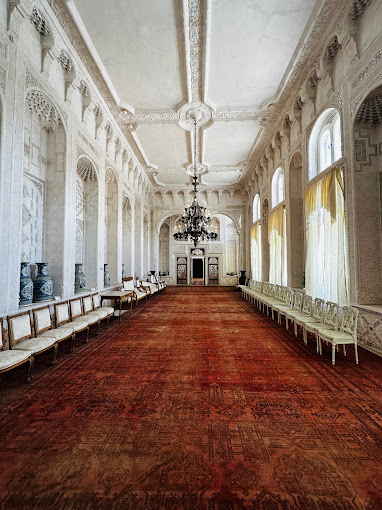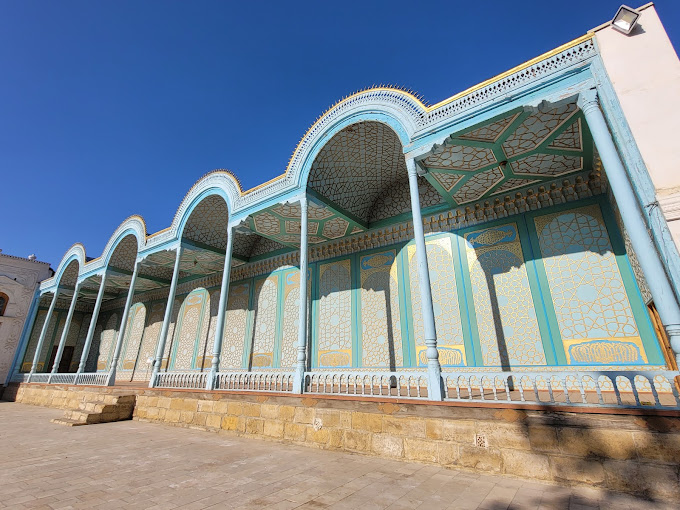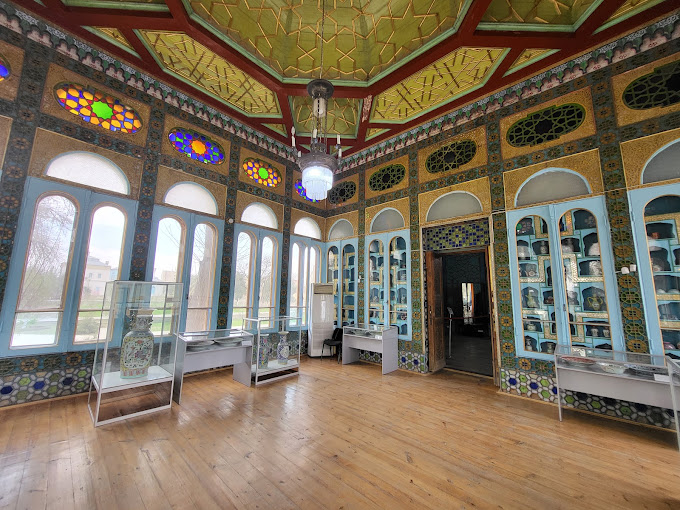Sitorai Mokhi Khosa Palace
Beyond the borders of Bukhara, just 4 km from the northern city limits, stands the magnificent Sitorai Mokhi Khosa Palace. It has served as a residence for city rulers for a very long time.
The Bukhara region is known for its sultry climate, but surprisingly, this does not apply to the majestic palace. Even in the hottest hours, it is cool here. And this is not an accident. The place for the construction of the structure was selected very carefully. First, they chose several points where they could erect a palace. Then they brought butchered lamb carcasses to each of the sites and waited. At the point where the meat did not spoil the longest, construction began.
The palace, as well as the Choir Minor, cannot be called a very ancient architectural monument. It was built at the end of the 19th century on the initiative of Emir Akhadkhan. But this ruler only managed to lay the foundation of the building, and a full-fledged palace was built under the next emir Muzaffarkhan. The building was intended for the wife of the Emir of Sitora, Bonu. It is known that the architects involved in the construction were trained by Russian architects, so there is a clear mixture of East and West in the appearance of the palace. Unfortunately, the emir's wife did not live long and died at a fairly young age, and the building was named after her beautiful name. "Sitorai Mokhi Khosa" literally means Russian "The Palace of a Star similar to the Moon."
But the construction of the building did not end there. The final stage was the construction of the largest building during the reign of Alimkhan. Under his close supervision, a magnificent arch was erected here, decorating the central gate, as well as a beautiful greenhouse and other structures.
Separately, it is worth mentioning the decoration of the central room — the White Hall, in which the ruler sat on a high throne. Here, for the first time, the architects used traditional ganch carving, the background for which was a mirrored plane. The founder of this innovation was Shirin Muradov, whose memory is immortalized today by a memorial erected on the palace grounds. The uniqueness of the painting also lies in the fact that the ornament is not repeated in any of the vast areas decorated with patterns. And this idea also has its own functions. Previously, an audience with the emir had to wait for hours, and the guests of the palace occupied themselves during this time by looking at the intricate swirls of the drawing.
Another unusual detail of the building is the colorful windows in the teahouse and the summer room. The interior of the teahouse was also amazing. The architects managed to make it so that the walls of the room could be pushed apart and changed depending on the time of the year. However, today only one version of the walls has survived. The teahouse is also famous for its gorgeous collection of expensive flower pots from China and Japan. According to rumors, the emir was the owner of an amazing bowl that could change its color if food with poison got into it. Therefore, before starting a meal, the ruler always placed this bowl next to him.
The inside of the palace is filled with mirrors. There are mirrored surfaces from Venice and Japan, as well as an interesting trellis that repeats the reflection as many as 40 times. There is also a legend associated with this piece of furniture: the ruler's new concubines were given a look in a trellis mirror. The beauty will be able to count how many of her reflections, so many rivals will stand in her way.
At the back of the court garden there is a guest pavilion, named after the Russian Princess Olga. But it is known that the princely person herself, the sister of Nicholas II, has never been to the palace. Externally, the small house inside looks simply stunning. To restore the ornate walls, the craftsmen needed to spend about 4 kg of gold leaf.
Now the Sitorai Mokhi Khosa Palace Museum welcomes guests and residents of the city on its territory. The museum's exposition consists of a variety of furniture and household items, the finest porcelain from China and Japan, as well as models of traditional 19th-century robes embroidered with gold thread.





















